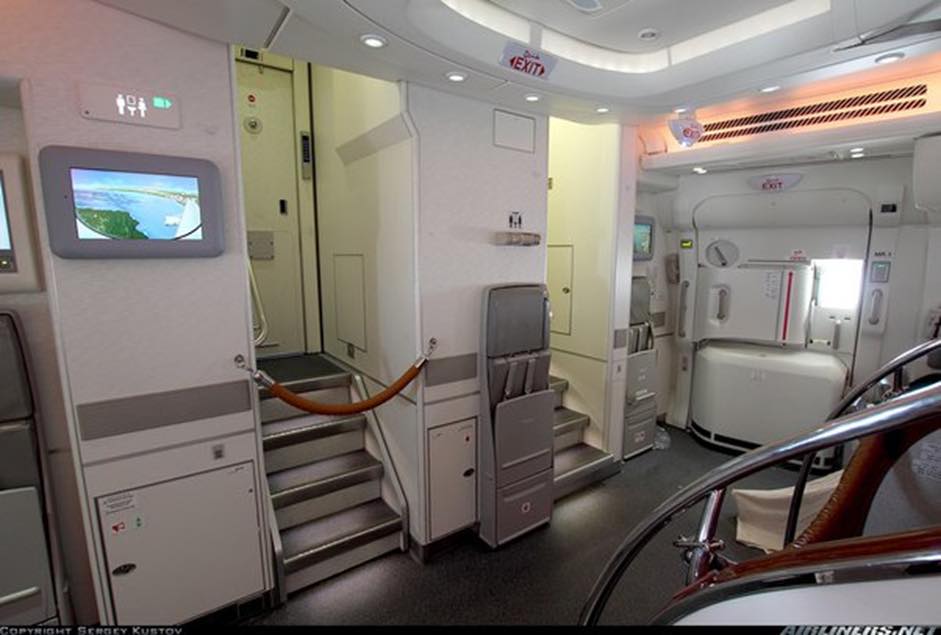The placement of the cockpit on the second floor of the Boeing 747 and on the first floor of the Airbus A380 is primarily due to the design choices made by each manufacturer. The Boeing 747, which first flew in 1969, was designed with a distinctive hump to accommodate both the cockpit and a passenger cabin. This design allowed for a front lower cargo hold and a shorter overall fuselage length.
On the other hand, the Airbus A380, which first flew in 2005, was designed with a full-length upper deck, allowing for a spacious cabin and a larger seating capacity. The placement of the cockpit on the lower deck of the A380 also helps with easier pilot access and enhanced visibility during ground operations.
Ultimately, the placement of the cockpit in commercial aircraft is a result of a combination of factors, including aerodynamics, passenger capacity, cargo space, and the manufacturer’s design choices.
However, A380 is *not* on the lower deck. Rather it’s on its own deck, between the main and upper decks.
This photo is from the front of the main deck, the flight deck is behind the door at the top of the short set of stairs that are roped off.

The 747 was initially designed with the intent of being a cargo aircraft used to carry large military equipment. The Boeing engineering team floated several ideas to solve the problem of loading and finally settled on the current design of a nose door.
Since the cockpit couldn’t be on the nose door, they had to put it above. This contributed to the iconic “hump” on the 747 fuselage and thus the cockpit being located on the 2nd story.
The 380 didn’t have the nose door issue, so the engineers could design and locate the cockpit wherever they though best.




